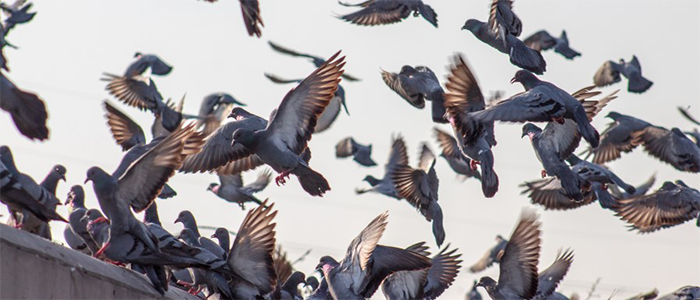Birds Control

Pigeons, starlings, house sparrows, and their droppings are associated with over 60 transmissible diseases that pose significant health risks to humans. These diseases include Histoplasmosis, candidiasis, cryptococcosis, salmonellosis, and St. Louis encephalitis, among others. These birds and their excrement can serve as reservoirs for a variety of pathogens, making them potential sources of infection when their droppings accumulate in urban environments or near structures where they roost or nest.
Histoplasmosis, for instance, is caused by inhaling fungal spores from bird droppings, particularly in areas with high concentrations of accumulated droppings. Salmonellosis and cryptococcosis can be contracted through direct contact with contaminated surfaces, highlighting the importance of proper hygiene practices around areas frequented by these birds.
Effective management and removal of bird droppings are crucial steps in mitigating the risk of disease transmission to humans. This involves regular cleaning and disinfection of surfaces where droppings are found, as well as implementing measures to deter birds from nesting or roosting in areas close to human habitation.
Public health awareness and proactive measures to control bird populations and their droppings are essential for minimizing the potential health hazards associated with these avian carriers of disease. By addressing these risks, communities can reduce the likelihood of outbreaks and protect the health and well-being of residents and visitors alike.